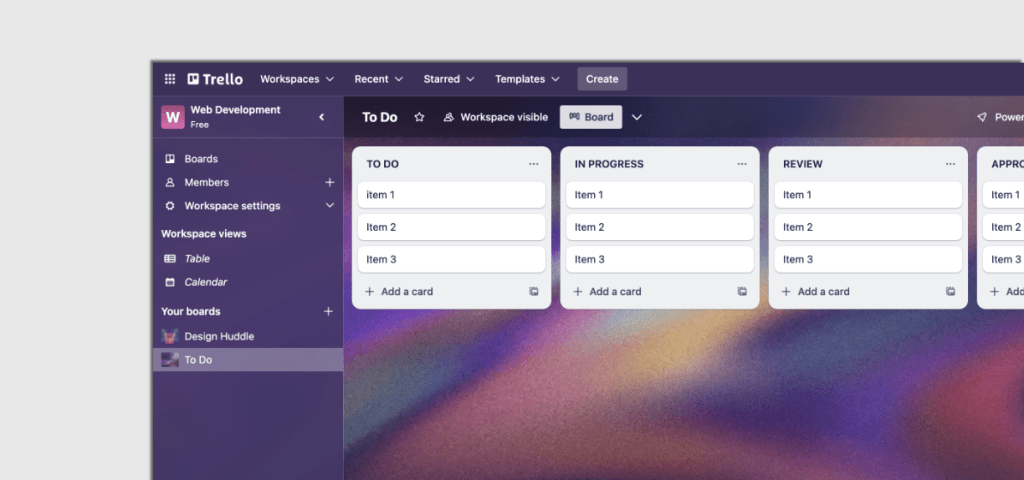How Full-Stack Teams Improve Efficiency in Software Development

While building a website, there are two ways to go about building your development team. You can:
- Hire dedicated front-end and back-end developers with specialized expertise.
- Hire full-stack developers adept at wearing multiple hats throughout the development lifecycle.
- Have a mix of both.
This decision is crucial, not just another checkbox on your entrepreneurial journey. It’s about finding a balance between depth and breadth of skill, between dedicated specialists and versatile generalists.
Full-stack developers offer a broad range of expertise and are adept in both front-end aesthetics and back-end functionality. This leads to a more integrated development process and potential cost savings. By consolidating diverse skill sets under one cohesive unit, full-stack teams streamline communication, minimize handoffs, and accelerate development cycles.
Yet, even with these advantages, assembling such a team can be difficult. In this article, we help you understand the full role of full-stack teams, uncover the complexities of hiring and integrating full-stack developers into your team, and show you why Saucal can be an excellent alternative to help you harness the power of WooCommerce with zero hassle.
Understanding the role of full-stack teams in software development
At their core, full-stack teams include developers well-versed in the various development languages and tools necessary to deliver a complete user experience. From the inception of an idea to the final launch of a product, a full-stack team serves as the backbone of the entire journey.
They seamlessly transition from conceptualization to design, development, testing, and deployment, wielding their comprehensive skill set to tackle each phase with precision and efficiency.
For instance, consider you want to develop an eCommerce store. Here’s how a full-stack team can help at every stage of the process within a wider development team, alongside dedicated specialists that optimize the team output.
- Conceptualization: The full-stack team collaborates with stakeholders to understand the business requirements, target audience, and market trends. Full-stack developers contribute by providing insights into the technical feasibility of various features and functionalities proposed during brainstorming sessions.
- Development: Throughout the development process, full-stack developers collaborate closely, smoothly integrating front-end and back-end components to ensure cohesion and functionality across the platform.
- Testing: Full-stack developers perform UI testing to ensure consistency and responsiveness across different devices and browsers and also execute unit tests and integration tests to validate the functionality of APIs, database interactions, and business logic, ensuring the robustness and reliability of the eCommerce platform.
- Deployment: Upon successful testing, the full-stack team prepares for deployment. DevOps engineers within the team configure deployment pipelines and automate the deployment process using tools like Docker and Kubernetes.
- Post-launch support and maintenance: Even after the eCommerce platform is launched, the full-stack team continues to provide support and maintenance. They monitor performance metrics, address user feedback, and implement updates or enhancements as needed to keep the platform competitive and secure.
The versatility of full-stack teams can help overcome challenges in website and custom plugin development, enabling faster problem-solving and reduced time in task switching. Utilizing a full-stack development team allows for:
- Capitalizing on diverse skill sets: Full-stack teams bring a mix of front-end, back-end, and database management skills. This versatility allows them to navigate complex projects and pivot quickly as needed.
- Boosting problem-solving capabilities: With broad expertise across technologies and platforms, full-stack teams can do more than just solve problems, they can preempt them. This comprehensive insight allows for proactive detection and inventive solutions that a specialist, confined to a single stack, may overlook.
- Increasing project pace: Full-stack teams have the capability to work on multiple project facets simultaneously. While one developer troubleshoots a server-side issue, another can perfect the user interface, thus shortening the development cycle and propelling the product toward the market with swifter, more determined strides.
- Optimal resource utilization: The amalgamation of varied skills reduces the need for larger, specialized teams, while a streamlined approach promotes cost-efficiency and maximizes project ROI.
In agile methodologies, full-stack teams streamline communication, share comprehensive codebase knowledge, and seamlessly collaborate between frontend and backend tasks. This integration reduces overhead, expedites decision-making, and fosters adaptability to evolving requirements.
Embracing a full-stack team, therefore, can be a technical advantage as well as a strategic maneuver. It is a declaration that a business seeks to navigate software development with a smart, sorted, and incredibly skilled team capable of facing any digital challenge head-on.
Full-stack vs. front-end vs. back-end developers
Understanding the distinction between different developer types can help you decide whether you need specialized developers on the project or a varied team. Let’s take a closer look at the differences between full-stack, front-end, and back-end developers.
Full-stack developers, proficient in both front-end and back-end technologies, handle a wide range of tasks throughout the development lifecycle.
Front-end developers specialize in crafting user interfaces using HTML, CSS, and JavaScript, ensuring a seamless user experience.
Back-end developers focus on server-side logic, database management, and API development, typically working with PHP.
Selecting the appropriate developer style requires consideration of the project’s scope and agility. Full-stack developers can supercharge agile teams with their broad expertise, facilitating prompt pivots and maintaining steady progress.
Conversely, front-end and back-end specialists bring deep expertise in technology, ensuring that cutting-edge security, performance optimization, and integrations are not mere afterthoughts but foundational pillars.
Full-stack developers offer breadth while specialists offer depth, which can be particularly vital in complex systems where precision and advanced knowledge of specific stacks are non-negotiable.
Digging into the structure of an effective full-stack team
In an effective full-stack team, role diversity is key to maximizing productivity and efficiency throughout the software development process. Typically, such teams consist of front-end developers responsible for crafting user interfaces, back-end developers focusing on server-side logic and database management, and DevOps engineers ensuring seamless deployment and infrastructure management.
The ideal team size can vary depending on the project’s scope and complexity. Smaller teams may have 5-7 members, ensuring close collaboration and streamlined communication. Larger teams may require additional coordination mechanisms to manage complexity effectively.

Communication and coordination are essential in full-stack teams. Utilizing tools like Slack, Microsoft Teams, or project management platforms such as Jira or Trello facilitates real-time collaboration, task tracking, and progress monitoring. Regular stand-up meetings and sprint retrospectives further enhance communication and foster a culture of transparency and accountability.
To enhance efficiency, full-stack teams can adopt agile methodologies such as Scrum or Kanban. These frameworks promote iterative development, allowing teams to deliver value incrementally and adapt to changing requirements.
Test-driven development ensures code quality and reliability, while continuous integration and delivery automate the deployment pipeline, reducing manual errors and accelerating time to market.
Common challenges with full-stack teams and how to overcome them
Transitioning to a full-stack team structure brings its own set of challenges that, when navigated properly, can lead to substantial growth and development within an organization. These challenges include:
Resistance to change: Shifting to a full-stack approach often meets resistance. By sharing success stories of enhanced project flexibility and the rewards of upskilling, leaders can inspire teams to embrace change. For example, offering opportunities for developers to lead projects that touch on new technologies can showcase the growth potential of a full-stack approach.
Recruitment and training: Locating skilled full-stack developers can be challenging due to high demand and the broad skill set required. On the other hand, training existing specialists to become proficient in both front-end and back-end technologies can be time-consuming. You need to utilize talent acquisition tools to source candidates with diverse skill sets or implement structured onboarding programs tailored to the specific needs of full-stack developers, combining theoretical knowledge with practical, hands-on experience.
Maintaining team dynamics: Full-stack teams may face difficulties in balancing workload distribution and collaboration, especially when individuals have varying levels of proficiency in different areas. Project owners have to encourage cross-functional collaboration and foster a supportive environment where team members can learn from each other’s strengths and weaknesses.
While the strategies outlined above provide effective solutions to common challenges faced by full-stack teams, some organizations may still encounter obstacles in implementing and maintaining such teams internally. This is where partnering with a specialized agency like Saucal can offer significant advantages.
With a dedicated team of experienced professionals, Saucal offers comprehensive WooCommerce development services, from custom plugin development to theme customization and performance optimization. By outsourcing development tasks to Saucal, organizations can benefit from streamlined processes, faster project delivery, and access to a wealth of specialized expertise.
Why Saucal’s expertise trumps building full-stack teams from scratch
With Saucal, companies can find an external development agency and a strategic partner that delivers the versatility and dynamism of a full-stack team without the initial setbacks of team assembly and training.
As Kostas Seresiotis, our Senior Product Engineer puts it:
Outsourcing your development project to an experienced agency connects you with a reservoir of specialized knowledge. It streamlines the transition to an expertly managed workflow, liberating your business to focus on its strengths. Partnering with a seasoned team ensures efficiency, quality, and a swifter path to your goals.
In the spirit of transparency, Saucal has made the commitment to a “no surprises” journey. By providing upfront billing and regular sprint reviews, we share every step of the development process, guaranteeing peace of mind and satisfaction for businesses seeking a clear and manageable workflow.
The result? From augmenting the functionality of a WooCommerce store to streamlining site operations, the positive outcomes speak for themselves.
Take the example of No Pong, the manufacturer of a highly popular, all-natural, cruelty-free deodorant, who faced significant technical challenges with their WooCommerce-based website.
After enduring 18 months of technical difficulties and spending $100,000 evaluating alternative platforms, No Pong struggled with site crashes, lost revenue, and an inability to segment customers effectively. They needed a scalable solution to stabilize their website and support their growing business.
Saucal stepped in to help them stabilize their website, enabling ed-to-end integration with analytics and email marketing platforms. We swiftly addressed critical issues, transforming the site’s performance within a week. With Saucal, No Pong experienced a 30% growth in business and expanded into new markets due to improved website performance.
Now, if you compare the traditional route of building a full-stack team internally with the choice of engaging Saucal, the difference is clear. While the former may offer a tailored team structure, the agility, adaptability, and immediate readiness of Saucal’s team provide an edge that is hard to replicate in-house.
Engage Saucal for peak WooCommerce development efficiency
Full-stack developers are the flag-bearers of efficiency, offering a comprehensive skill set that often trumps the need to hire separate front-end and back-end specialists.
However, why spend the time and effort in building a team in-house, when you can work with one that’s going to be as good, if not better?
Best WooCommerce agency I have ever worked with. Seriously. They go so far above and beyond, it’s like having an in-house dev team sitting there with you.
Seth Kravitz, CEO, Phlearn
Choosing Saucal means embracing a synergy where insights are clear and solutions swift. Efficiency and expertise have center stage, and even shifting gears is possible with ease.
So, if you are looking to tap into WooCommerce’s potential unfettered, the next step is yours to take. It all begins with a simple, yet transformative action – a conversation with Saucal. Reach out today, and build the WooCommerce venture of your dreams.
 Book now, build later. Lock in 20% OFF projects over $10K when you book by Dec 31.
Book now, build later. Lock in 20% OFF projects over $10K when you book by Dec 31.  Start 2026 focused, stress-free, and ready to grow.
Start 2026 focused, stress-free, and ready to grow. 


